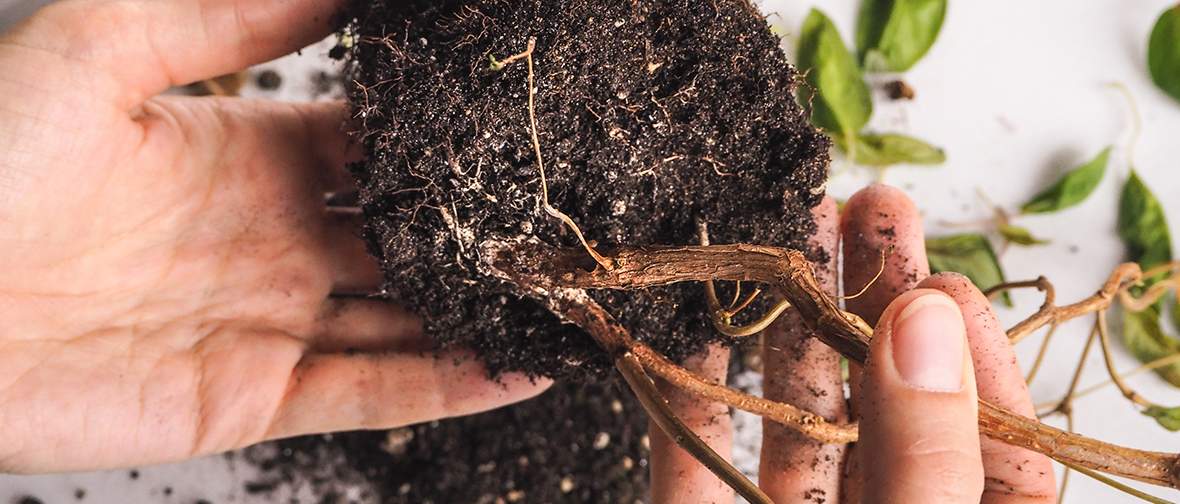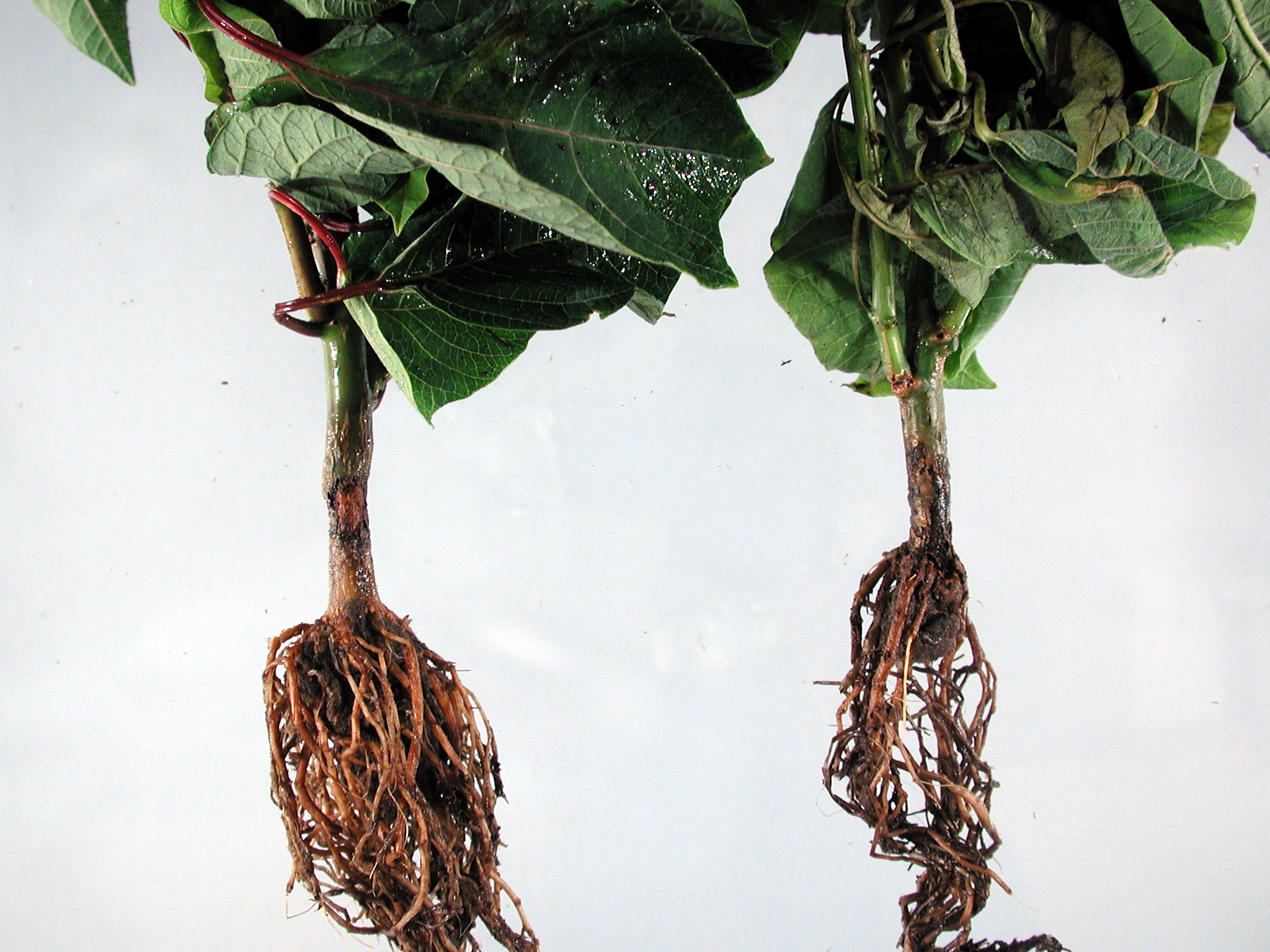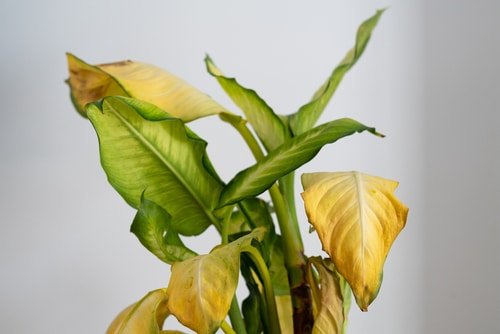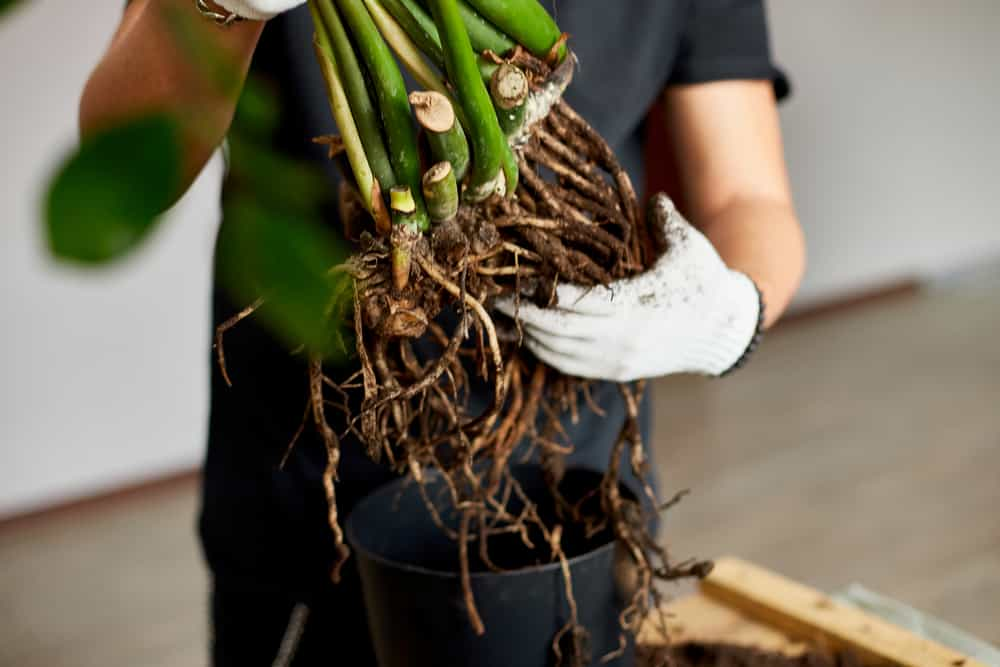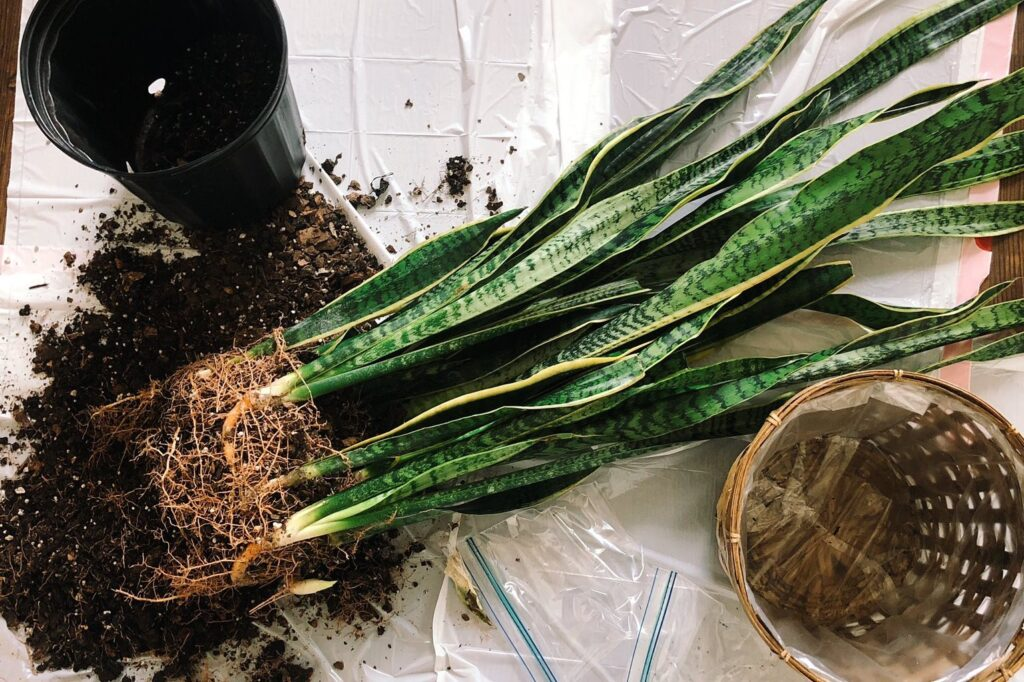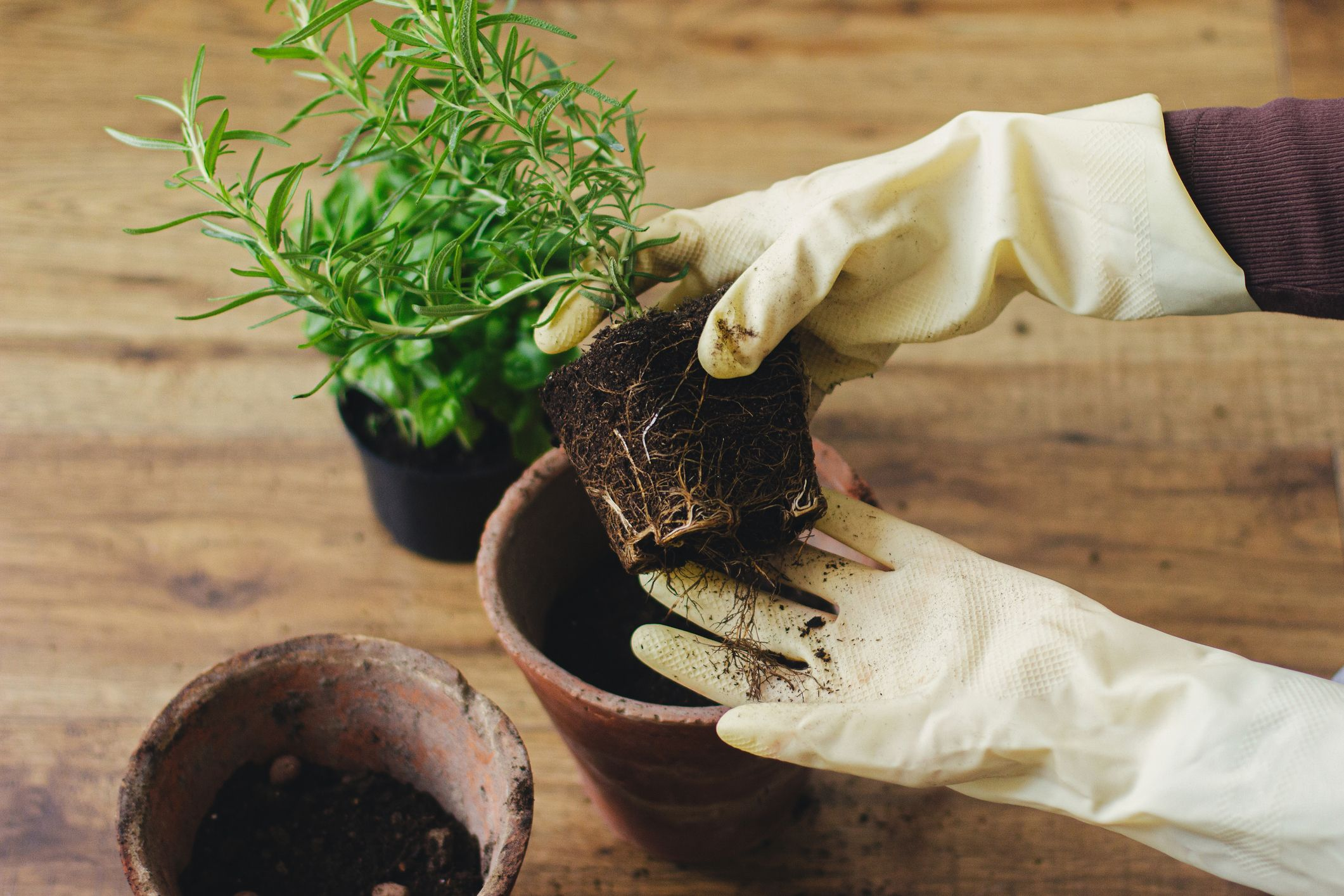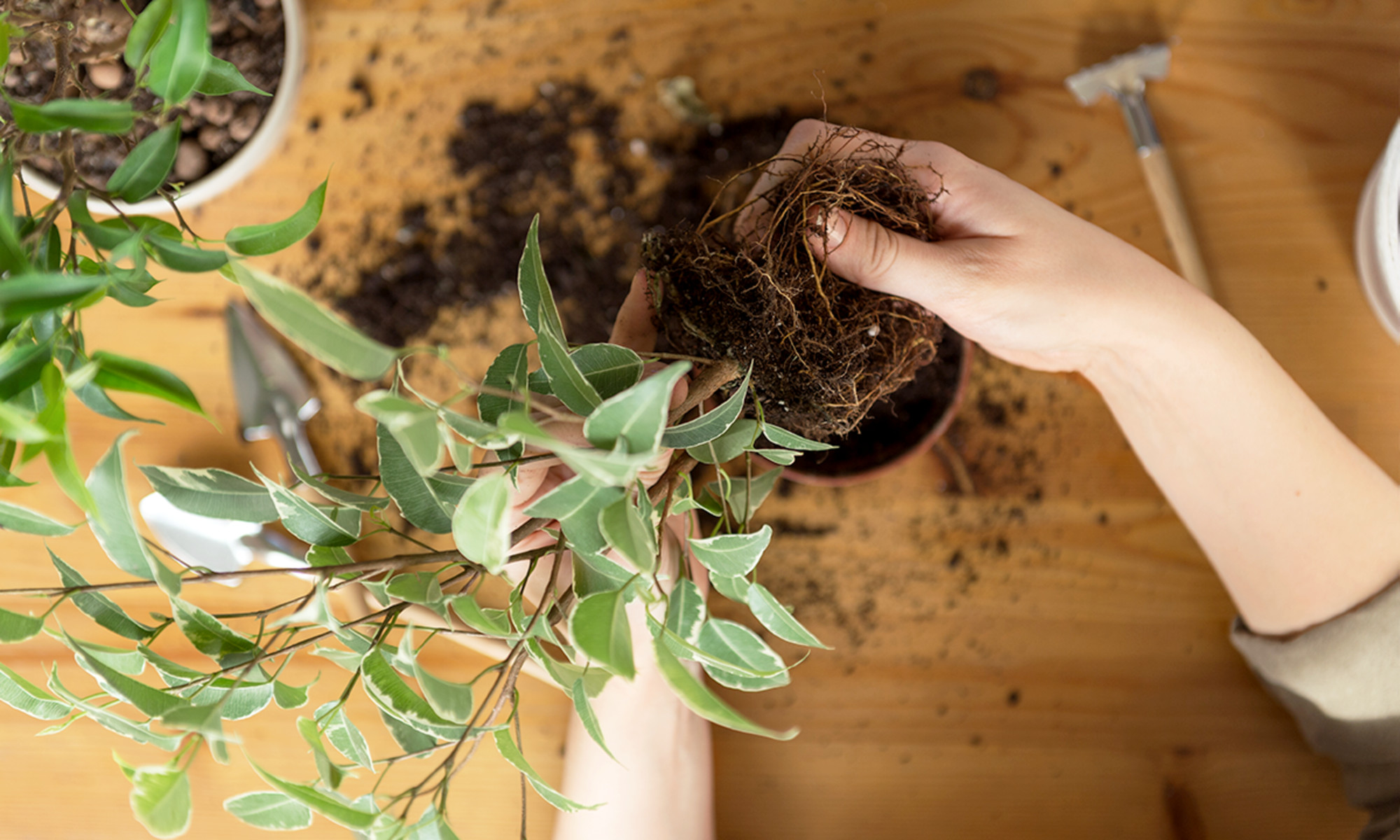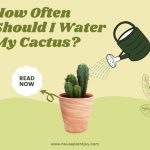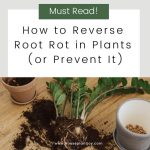HousePlantJoy is supported by our audience. When you purchase through one of our links, we may earn a small affiliate commission. As an Amazon Associate I earn from qualifying purchases. Your cost is not affected.
==================
Hey there, fellow plant enthusiasts! If you’ve noticed your beloved green companions looking under the weather with wilting leaves and a general lack of vitality. In that case, you might be dealing with the notorious culprit: root rot. In this comprehensive guide, we’ll walk you through the essential steps of How to treat root rot. Understanding the signs, causes, and, most importantly, the effective treatments for root rot is crucial. So, grab your gardening gloves, and let’s embark on a journey to revive those struggling plants and bring back vibrant life to your indoor or outdoor oasis. Let’s get those hands dirty and save those roots!
What Exactly is Root Rot?
Photo By: Blossom
Have you ever wondered why your plants sometimes look a bit off? One common issue is root rot, especially in plants with poor drainage. It’s like a plant disease nightmare, but the good news is it can be prevented and treated! Root rot mainly happens in potted plants and is caused by bacterial or fungal infections attacking the plant’s root system due to prolonged exposure to excessively wet soil in overwatered conditions.
So, how does this happen? Too much water, often due to overwatering and poor drainage, is the culprit here. Overwatering drowns the roots, depriving them of oxygen, leading to rot and, eventually, plant death. Two pesky fungi, pythium and fusarium, also thrive in wet soil conditions. Pythium usually spreads through fungus gnats and is a bacterial organism. On the other hand, the fusarium loves feeding on dying plant tissues and is a common soil fungus.
Experience the ultimate root rot solution for DWC systems. Say goodbye to root issues and hello to thriving greenery! #ads #commissionsearned
Unraveling the Roots of Root Rot: Understanding the Causes
Photo By: Pnwhandbooks.org
Let’s uncover the culprits behind root rot, a pesky plant disease. It’s caused by several factors, including:
Overwatering
Overwatering is the top root rot troublemaker. When you drown your plants with excess water, their roots can’t breathe and start to rot.
Poor Drainage
Poor drainage means water hangs around the roots too long, suffocating them by hogging all the oxygen. It’s a hotbed for fungal infection and rotting roots.
Fungal Infections
Fungi aren’t just things you find in the forest – they can also be plant pests. Nasty fellows like Pythium, Phytophthora, and Fusarium can lead to root rot. They’re like the bad guys of the plant world, causing suffering from root rot and other plant diseases.
Bacterial Infections
Bacterial infections causing root rot are rare, but they can still occur. Think of it as a less frequent but equally unwelcome guest at the root rot party.
Root Damage
Just like a scraped knee can lead to more trouble, root damage from transplanting, pests, or diseases can make your plants more vulnerable to root rot.
Stressed Plants
When your plants are stressed, they’re like sitting ducks for roots. Plants can feel stressed for various reasons, such as lack of water, insufficient nutrients, or facing extreme weather conditions – scorching hot or freezing cold.
Now you’re all set to spot these root rot culprits, keep your eyes peeled for rotting roots, and ensure your plant buddies stay healthy and thriving!
Recognizing the Signs of Root Rot in Your Plants
Photo By: Bustling Nest
Plants have their ways of communicating, especially when they’re feeling under the weather. So, how can you tell if your green friend is susceptible to root rot?
Wondering how to treat root rot? Look for these indicators from your plant; they’re like nature’s way of sending out an SOS call:
- Wilted or Yellowing Leaves: When your plant’s leaves turn a sad shade of yellow, it’s often a sign that something’s up with the plant’s soil.
- Dark Brown or Black Roots: Check beneath the surface. If the roots appear dark brown or black, your plant might face root rot’s wrath.
- Foul Odor: A not-so-pleasant smell wafting from the soil. Yep, that’s a sign too.
- Leaves Taking a Dive: If leaves decide to make an unexpected landing on the ground, it’s time to pay attention.
- Leaning Plant: Your plant leaning to one side like it’s had a rough day? That’s a visual clue as well.
- Soft or Mushy Stems: The stems feeling unusually soft or mushy? That is not a good sign.
- Persistent Wilting: Even after a good watering, your plant continues to wilt as if perpetually thirsty.
Here’s your action plan: if you notice any of these signs, don’t just stand there! Roll up your sleeves and dig a little. Inspect those affected roots. If they’re black or mushy, it’s time to be the hero your plant needs. Treat that root rot, and your green buddy will bounce back, happy and healthy!
Again, discover the ultimate remedy for root concerns in your Deep Water Culture (DWC) setup. Bid farewell to root problems and welcome flourishing plants with open arms! #sponsored #earncommissions
Want to Revive Your Plants? Here’s How to Treat Root Rot!
Photo By: Houseplant Authority
Handling root rot can definitely be tough, but here’s the good news: if you spot it early, there’s hope! Yet, if you leave it be for too long, it might sadly mean the end for your beloved plant buddy. Once root rot takes hold, completely removing it can be tough. In such cases, your best bet is to trim your plant’s dying and rotting parts. After that, replacing the old soil with fresh, healthy soil is crucial to give your plant a fighting chance.
But what if the root rot has spread far and wide, affecting both roots and leaves? It might seem like a lost cause, but all hope isn’t necessarily lost. You could help your houseplant bounce back if some healthy roots are left. Here’s what you can try to learn how to treat root rot:
Gently Remove the Plant From Its Soil and Inspect Its Roots
Photo By: Gardensline
Lift your plant out of its container and delicately shake off the extra soil clinging to its roots. Now, let’s give those roots and leaves a closer look. Look out for the parts that aren’t doing so well – you’ll spot them because they’ll be a sad brown color, feeling mushy or stringy. On the other hand, the good, healthy roots will be nice and firm, usually white or green.
Trim Off the Decaying Parts of the Plant’s Roots
Photo By: The Spruce
When treating root rot in your plant, it’s crucial to identify the unhealthy roots. With sharp, clean pruning shears or scissors, gently cut away the rotting portions, removing all affected roots and leaves. Be particularly attentive to distinguishing between the unhealthy and remaining healthy roots. Take your time and exercise caution, ensuring you preserve the well-being of the remaining healthy roots while removing the damaged ones.
Repot Your Plant to a New Pot With Fresh Soil Mix
Photo By: Good Housekeeping
After you’ve removed all the unhealthy parts of your plant, it’s time for a fresh beginning. Get a new pot with a drainage hole, which is essential for your plant’s well-being. Don’t reuse the old soil; instead, fill the new pot with high-quality potting soil. This fresh start and proper drainage will give your plant the perfect environment to flourish.
Root Rot Prevention: Essential Tips for Healthy Plants
Photo By: MindBodyGreen
Here are some friendly tips to help you prevent root rot and keep your plants healthy:
Watch Your Watering
The primary reason for root rot is excessive watering. Water your plants deeply, but only sometimes. Let the soil dry between waterings.
Choose the Right Soil
Choose soil that drains well and feels light, avoiding heavy, clay-like soil that traps water, inviting root rot. When gardening, add compost or organic matter to the soil’s drainage. In pots, opt for a special potting mix tailored for excellent drainage.
Drainage Holes Matter
Ensure your pots have drainage holes; these openings allow surplus water to drain away, keeping your plant’s roots from waterlogging. No drainage holes? No problem! You can easily drill a few in the pot’s bottom.
Easy on the Fertilizer
Overdoing it with fertilizer harms the roots and makes them more susceptible to root rot. Stick to the recommended amounts on the package to keep your plants healthy and happy.
Mulch Wisely
Mulch is fantastic for retaining soil moisture. Choose mulch, like bark chips or shredded leaves that don’t hold too much water. Avoid pine needles – they can make the soil too acidic, which isn’t ideal for most plants.
Act Swiftly
If you suspect root rot, act fast. Inspect your plant’s roots. Rotten roots are usually black, slimy, or mushy. Trim away these unhealthy parts and repot your plant in fresh, well-draining soil. Consider using a fungicide to eliminate any remaining fungi.
With a little attention and care, you can easily prevent root rot, ensuring your plants stay vibrant and thriving!
Here’s an additional informational video about root rots.
Root Rot – Symptoms | Causes | Treatment | Prevention | By: Bring Nature Inside
Reviving Your Green Companions: Conquering Root Rot and Ensuring Plant Health
Understanding and recognizing root rot is the first step in ensuring your green companions stay healthy and thriving. Knowing how to treat root rot is essential. If your plant is affected, keep hope. With careful pruning and repotting in fresh soil with proper drainage, you can give your plant a chance to bounce back. Remember, swift action is key – the sooner you address root rot, the better the chances of saving your beloved plant.
So, grab your gardening gloves, be vigilant, and don’t be afraid to get your hands dirty. With these essential steps and preventive tips, you can protect your plants from the clutches of root rot, ensuring they flourish and bring life to your indoor or outdoor oasis. Happy gardening!
FAQs
How Much Time Does a Plant Need to Recover From Root Rot?
The time it takes for a plant to bounce back from root rot varies based on how badly it’s affected and the type of plant. Nature has its own pace! Some plants, tough cookies, might perk up within a few weeks. But for others, the road to recovery might stretch over several months or even years.
Several things come into play here:
- Damage Severity: If the roots took a real beating, the plant’s healing process will naturally take longer.
- Plant Variety: Some plants are like superheroes against root rot. Succulents and cacti, for instance, are hardy fellows, more resistant to soggy situations, and thus, they tend to recover faster.
- Growing Conditions: Picture this – the right amount of sunlight, water, and nutrients. Plants in optimal conditions are better at quickly shaking off root rot. It’s like giving them the best fighting chance in their battle for recovery.
Can Hydrogen Peroxide Treat Root Rot?
Hydrogen peroxide can be your plant’s best friend against root rot! It might sound fancy, but it’s just a mix of water and oxygen, something we all have at home. Pinning this magic potion on your plant’s roots fights off the nasty fungus causing root rot. Not just that, it even gives your soil a boost by improving drainage and letting in more air. So, it’s like a superhero for your plants, battling the bad guys and helping them breathe easy!
?? Houseplant Lovers Unite! ??
Welcome to HouseplantJoy blog, your ultimate destination to dive into the captivating world of houseplants and gardening tips. Whether you’re a plant enthusiast or just starting your green journey, our Facebook page is here to nurture your passion for leafy and lush.
? Hey there, green thumbs and plant enthusiasts! Are you looking to add a touch of nature to your life? ?? Look no further than Houseplant Joy! ??
?? Let’s grow together! Follow us on Facebook, Instagram, and Twitter to embark on an exciting journey of houseplant bliss. ??
Facebook: Dive into the world of houseplants and tips at facebook.com/houseplantjoyblog. ??
Instagram: Immerse yourself in a visual feast of stunning houseplant inspiration at instagram.com/houseplantjoy20. ??
Twitter: Stay in the loop with our green community and stay updated on the latest trends in the houseplant world at twitter.com/HouseplantJoy. ??
Stay in the loop with the Houseplant Joy community on Twitter, your go-to source for all things houseplants and gardening trends. We are your green companions on this exciting journey, keeping you updated on the latest happenings in the ever-evolving world of indoor greenery.
? Why Should You Join Us? ?
? Get insider secrets: Unearth the best-kept secrets to keep your plants thriving and blooming like never before. ??
? Expert advice: Gain access to our team on Facebook, Twitter, and other social media channels, and meet our ,gardening experts eager to help you on your plant journey. ???
? Engage with like-minded souls: Connect with fellow plant lovers, exchange stories, and build a supportive community. ??
?? Join us today! Follow Houseplant Joy on Facebook, Instagram, and Twitter for daily inspiration and a blooming good time! ?? #HouseplantJoy #GreenThumbsUnite #HouseplantLove


